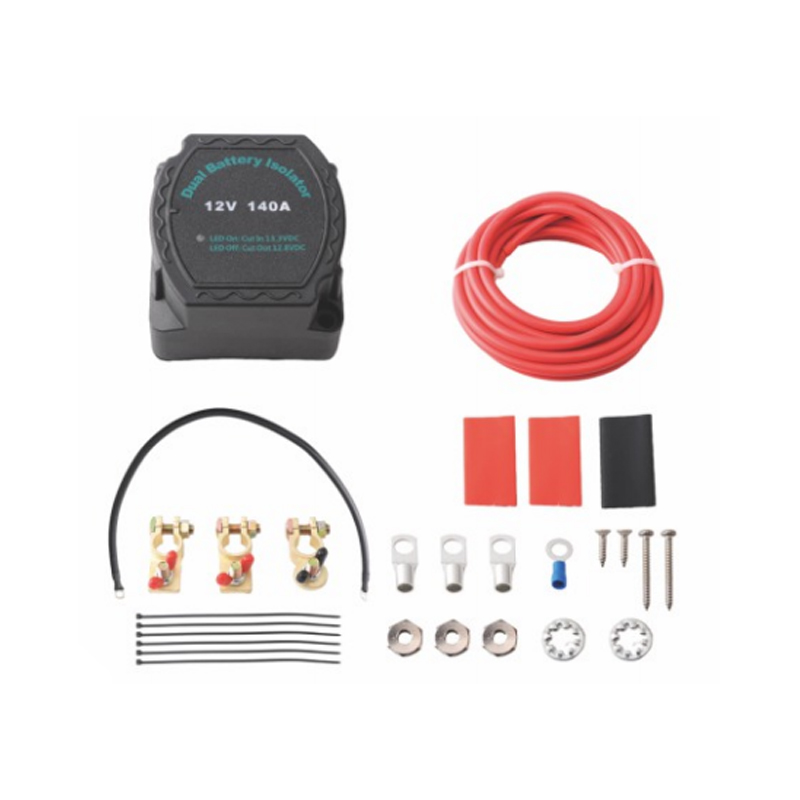- Tel: +86-15305875100
- E-mail: [email protected]
- Please contact us if you have questions.

The Impact of a Dual Battery Isolator on Car Batteries and Their Performance
Prevention of Deep Discharge
One of the primary advantages of a Dual Battery Isolator is its ability to prevent deep discharge of the main starting battery. Without an isolator, the auxiliary battery could draw power from the starting battery, depleting it and potentially leaving you stranded with a dead engine battery. The isolator ensures that the starting battery is disconnected from the load of the auxiliary battery once the vehicle is turned off. This prevents over-discharge of the starting battery, which can cause reduced battery life or an inability to start the vehicle.
The Dual Battery Isolator allows the auxiliary battery to be used for non-essential systems, preserving the power of the starting battery for essential vehicle operations. This intelligent separation not only ensures a longer lifespan for the starting battery but also improves the performance of both batteries.

Enhancing Battery Lifespan
By isolating the two batteries, the Dual Battery Isolator can significantly improve the lifespan of both. Without an isolator, the continuous load on both batteries could cause excessive wear and tear, ultimately reducing their lifespan. The isolator ensures that each battery is used for its purpose, preventing both from being overburdened or damaged.
For instance, the auxiliary battery, which is primarily used to power accessories, is charged only when the engine is running and the alternator is supplying power. This means that the auxiliary battery won’t be drained by devices that are not necessary for starting the vehicle. As a result, the main starting battery is not negatively impacted by the use of the secondary battery, and both batteries can maintain their health over time.
Improved Charging Efficiency
The Dual Battery Isolator ensures that both batteries receive adequate charging from the vehicle's alternator. When the engine is running, the isolator allows power to flow to both batteries in a controlled manner. As a result, the alternator can effectively charge the auxiliary battery without affecting the main battery's ability to charge.
The isolator also prevents the possibility of overcharging the auxiliary battery. Some advanced isolators feature smart charging technology that manages how the power is distributed between the batteries. By optimizing the charging cycle, the Dual Battery Isolator helps maintain the health of both batteries, preventing issues like overcharging or undercharging that could degrade battery performance.
Impact on Battery Load Distribution
It plays a crucial role in balancing the load between the batteries. In a typical vehicle without an isolator, the primary battery is responsible for powering not only the starter motor but also any additional accessories. This can cause increased wear on the main battery. With a Dual Battery Isolator, the secondary battery takes on the load of auxiliary systems like lights, air compressors, or refrigerators in RVs and off-road vehicles. By redistributing the load, the isolator reduces stress on the main battery, allowing it to focus solely on starting the vehicle.
This distribution of power helps avoid overloading either battery and ensures a more stable power supply, which is particularly important in vehicles with high electrical demands, like those used in off-roading or commercial settings.
The Overall Impact of a Dual Battery Isolator
In summary, a Dual Battery Isolator provides significant benefits for both the starting and auxiliary batteries in a vehicle. It prevents deep discharge, improves charging efficiency, enhances battery lifespan, and balances the load distribution between the batteries. By ensuring that both batteries are used properly and not overburdened, the isolator helps maintain the health and performance of the entire electrical system. For vehicles with multiple batteries, especially those that require heavy electrical usage or frequent accessory power, it is a crucial component in optimizing battery life and ensuring reliable performance.
News categories
Related Products
Request for a call today
-
-
Sophia Ye
-
Phone: +86-15305875100
-
WhatsApp: 15305875100
-
Email: [email protected]
-
- Mobile Terminal


 English
English Español
Español














